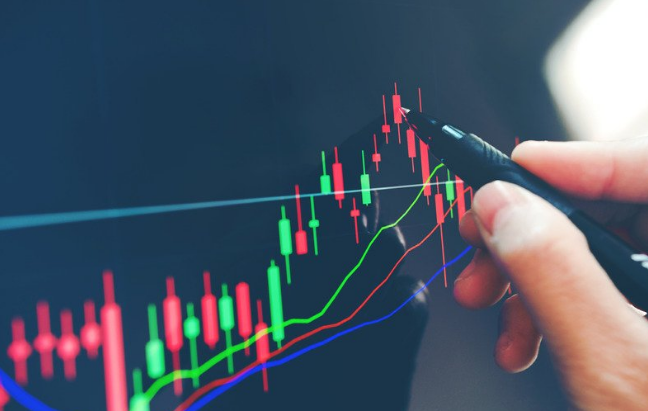Table of Contents
If you do trading regularly, you should know that trading is not done 365 days or 366 days a year(leap year). The days are counted according to different holidays that come in the way. Weekends, not to forget. You probably have noticed how the value of one commodity keeps on changing, for example, Gold. Its value keeps fluctuating. The same is with cryptocurrency. Thus, it does not come as a surprise that on Monday, the value of one bitcoin was 55,000euro and the next 56,000euro. Therefore, the users are advised to look at the rate before selling or buying their cryptos or trading. To know how to trade is a necessity, but it is equally important to know when. How many trading days in a year with the knowledge of the most volatile month of the year.
Trading Days
 The trading day is simply the period that a stock exchange is open for small businesses. It is dependent on the timings according to different countries. New York’s trading day starts at 9:30 am and ends at 4:00 pm. Singapore has the longest trading day! So, how many trading days in a year, then? Well, there are a total of 252 trading days. It excludes all holidays and weekends. The trading day commences from a ringing bell and ends on a closing bell. As the closing bell rang, the trading time is frozen until the next trading day commence.
The trading day is simply the period that a stock exchange is open for small businesses. It is dependent on the timings according to different countries. New York’s trading day starts at 9:30 am and ends at 4:00 pm. Singapore has the longest trading day! So, how many trading days in a year, then? Well, there are a total of 252 trading days. It excludes all holidays and weekends. The trading day commences from a ringing bell and ends on a closing bell. As the closing bell rang, the trading time is frozen until the next trading day commence.
How it is Calculated?
 The trading days are scheduled every year according to holidays, weekends, and also a leap year. Sometimes, the usual week from Monday to Friday changes as per the instances happening. There are sometimes shorter days as well. Trading days are calculated according to the following:
The trading days are scheduled every year according to holidays, weekends, and also a leap year. Sometimes, the usual week from Monday to Friday changes as per the instances happening. There are sometimes shorter days as well. Trading days are calculated according to the following:
- Leap year
Every four years is a leap year. If the extra day, the 29th of February falls on a weekend, it is counted as a holiday, especially a Saturday. However, if it falls on a weekday, then the number of trading days increases. The year 2020 was a leap year. Thus, the trading days were increased by the day, 253 days in total.
- Fixed days holidays or Mandatory Off days are
Martin Luther King Jr Day, President’s Day, Good Friday, Memorial Day, Labor Day, Christmas Day, Thanksgiving Day.
- Weekend
The weekend days most of the year remain the same, 104. Sometimes, however, it sees a change. It is increased depending on where the first weekend falls. If the year has started from a Saturday, the weekend days will be 106. Therefore, reducing the total number of trading days in that year irrespective of being a leap year also.
- Shorter days
Trading between 9:00 is-1:00 pm is known as a short day that is declared according to circumstances.
- Some days when trading is permitted
Columbus Day, Veterans Day, New Year’s eve. The Trading days are counted, keeping in mind all the specific days The number of days in a year – Weekend days – Fixed holidays.
365-104-9 = 252 trading days
Varying of Trading Days
 If any public holiday falls on the weekend, the market closes according to the following scenario:
If any public holiday falls on the weekend, the market closes according to the following scenario:
- If the holiday falls on Saturday, the preceding Friday will be a day off.
- If a holiday falls on Sunday, the subsequent Monday will have a day off.
Sometimes, when there are many instances like a state funeral, market closures are announced irrespective of a weekday. The last was in 2018 at President’s George H.W Bush Funeral. The stock market can also observe a close day other than the marked holidays. It can be:
- Technical issues
- Exchange’s trading platform
- Terrorist attacks
- Extreme weather events
Uncertain or Risky Days
- First day of the month
- Last day of the month
- Jobs report
- Earnings announcement days (specific stocks)
- Option expiration Friday
- Federal Open Market Committee days
Volatile Month
October is considered the most volatile month of the year 1928, the percentage of S&P saw a staggering 8.25%. October was the month when the world experienced the Great economic Depression of 1929 and the 1987economic depression. Other factors that come into the picture are the uncertainty created by the presidential and midterm elections held in August, September, November.
Longest Trading Day
 European binary trading starts as early as 8 in the morning and ends at 4:30 in the evening. It is because of Europe’s geographical location. It can span Asia close and Wall street’s Open. Thus, they can do trading keeping both in mind. When asked to the Federation of European Exchange about shortening the time to which, they answered, they were keeping interested in serving investors. You can easily create an account on bitcoin revolution login and start trading.
European binary trading starts as early as 8 in the morning and ends at 4:30 in the evening. It is because of Europe’s geographical location. It can span Asia close and Wall street’s Open. Thus, they can do trading keeping both in mind. When asked to the Federation of European Exchange about shortening the time to which, they answered, they were keeping interested in serving investors. You can easily create an account on bitcoin revolution login and start trading.
Pre-Market and Aftermarket
Apart from the trading day, Traders can either buy or sell stocks in the pre-market and after-hours market, accepting that most of the trading happens during trading hours. This pre-market session starts just before the trading hours start. It takes place between 8:00 am -9:30 am ET. The after-hours have their time management from 4:00 to 6:00 pm ET. Some traders like to trade in between these hours as it gives them a leg on the competition by quickly responding to recently released news outside regular trading hours.
Conclusion
Sometimes, it is not about trading in those set trading days of the year. It also sometimes becomes dependent on traders’ time. It is not every time that a trader will be free. There would be times when a trader won’t be able to do trading. It can be going on a vacation, being sick or uncertain situations. Knowing about trading days is crucial for having a successful portfolio of trading. It helps the user when to buy or sell or when is the perfect time to do trading. The trading days lets the trader know the risky month and days. Also, the weekend and holidays that come through according to the fixed holidays. To have successful trading, knowledge of trading is crucial.

